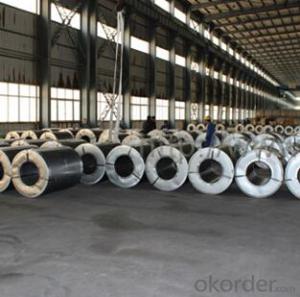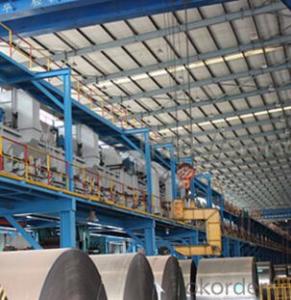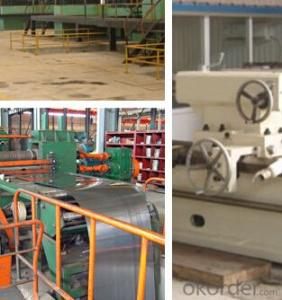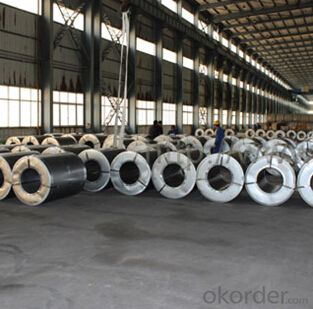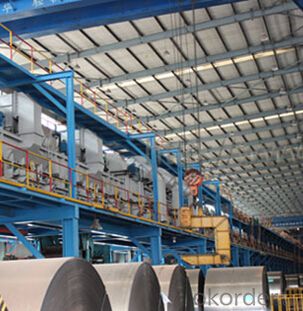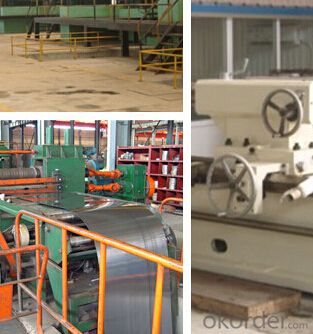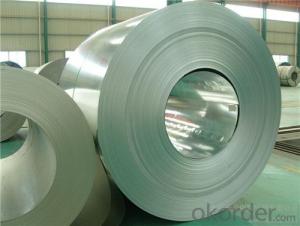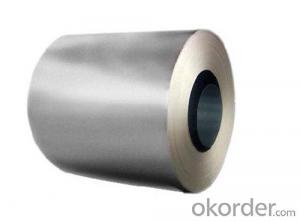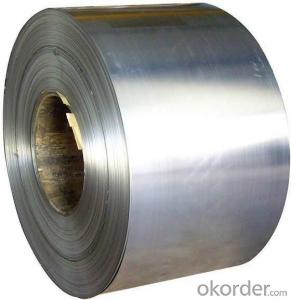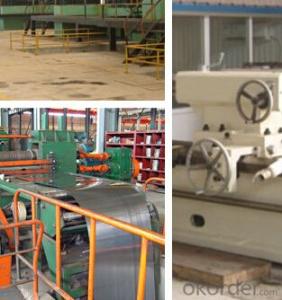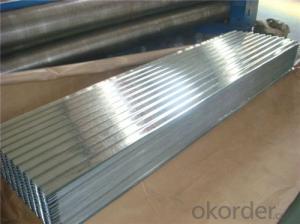Surface Finish Cold Rolled Steel Coil for Building
- Loading Port:
- Shanghai
- Payment Terms:
- TT OR LC
- Min Order Qty:
- 25 m.t.
- Supply Capability:
- 10000 m.t./month
OKorder Service Pledge
OKorder Financial Service
You Might Also Like
Basic Info.
Model NO.:SPCC
Surface Treatment:Oiled
Technique:Cold Rolled
Standard:ASTM, JIS, GB, DIN, BS
Steel Grade:SPCC
Product Description:Cold Rolled Steel
Brand Name:Cheeho & OEM
Heat Treatment:Annealed
Temper Type:Ba
Margin Status:Ec & Em
Surface Condition:Sb & SD
Surface Quality:FC & Fd
Inner Diameter:508-610mm
Approved Certificate:SGS & ISO & BV & TUV
Export Markets:Global
Additional Info.
Trademark:CheeHo & OEM
Packing:Standard Seaworthy Package
Standard:SGS & ISO & BV & TUV Approved
Origin:Jiangyin, Jiangsu, China
HS Code:72091790
Production Capacity:250000mt/Year
Product Description
Brief Introduction
Cold Rolled Steel is steel that has been worked below its recrystallization temperature by passing it between a pair of rollers. Recrystallization temperature is the temperature at which grains in the lattice structure of the metal have been rearranged, leaving it free of strain and deformations. Cold Rolled Steel is pre-treated before being cold rolled with a process known as pickling, which uses strong acids to remove scale and other impurities. The Cold Rolled Steel is then passed through rollers to reduce its thickness. Most cold rolling takes place in multiple passes and as the size of the Cold Rolled Steel is further reduced, its strength and hardness both increase, but its ductility decreases. After cold rolling, heating the metal up in a process known as annealing can restore some of its ductility. The final Cold Rolled Steel coil may be manufactured in the form of sheets, strips, bars, or other forms.
Specification
1. Thickness: 0.4-2.0mm
2. Width: 900-1250mm
3. Inner Diameter: 508mm
4. Weight of Steel Coil: 3-15MT
5. Heat Treatment: Annealed
6. Margin Status: EC & EM
7. Surface Quality: FB&FC
8. Surface Status: SB & SD
9. Surface Treatment: Oiling
Mechanical Properties
1. Yield Strength: ≤320MPa
2. Tensile Strength: ≤370MPa
3. Elongation (L=50mm, b=25mm) When:
(1) Nominal Thickness<0.25mm: 30%
(2) Nominal Thickness 0.25mm-<0.40: 32%
(3) Nominal Thickness 0.40-<0.60mm: 34%
(4) Nominal Thickness 0.60-<1.0mm: 36%
(5) Nominal Thickness 1.0-<1.6mm: 37%
(6) Nominal Thickness >1.6mm: 38%
Application
1. Base metal for coated and dipped products.
2. Home appliance
3. Precise welding tube
4. Flux cored welding wire
5. Bicycle, battery shell,
6. Automobile fitting, hardware
7. Enameling industry etc.
Superiority
1. High precision of dimensional tolerance
2. Excellent mechanical property such as the yield strength and tensile strength, etc.
3. Being highly resistant to denting
4. Exhibits useful magnetic properties
5. High quality surface finish and get well prepared for the surface coating
6. Available in a variety of sizes and shapes with characteristics useful in a wide range of applications
Chemical Components
| Grade | Chemical Components | ||||
| C | Mn | P | S | Alt | |
| SPCC | ≤0.12 | ≤0.50 | ≤0.035 | ≤0.025 | ≥0.020 |
| SPCD | ≤0.10 | ≤0.45 | ≤0.030 | ≤0.025 | ≥0.020 |
| SPCE | ≤0.08 | ≤0.40 | ≤0.025 | ≤0.020 | ≥0.020 |
- Q: What are the different types of steel coil edge trimming methods?
- There are several different methods used to trim the edges of steel coils, including slitting, shearing, and laser cutting. Slitting involves using circular blades to cut the edges of the coil, creating narrower strips. Shearing is a process that uses a straight blade to cut the coil edges. Laser cutting is a more advanced method that uses a laser beam to precisely trim the edges of the steel coil. These methods are used depending on the specific requirements of the steel coil and the desired end product.
- Q: How are steel coils used in various industries?
- Steel coils are used in various industries for a wide range of applications. In the automotive industry, they are used to manufacture car bodies, chassis, and parts. In construction, steel coils are used in the production of beams, columns, and roofing materials. They are also utilized in the manufacturing of appliances, electrical equipment, and machinery. Additionally, steel coils are essential in the production of pipes, tubes, and other structural components. Overall, steel coils play a crucial role in providing strength, durability, and versatility to multiple industries.
- Q: What temp does fire have to be to melt steel?
- more than 300° F
- Q: How are steel coils inspected for hardness?
- Steel coils are inspected for hardness using a non-destructive testing method called Rockwell hardness testing. This involves pressing a diamond or ball indenter into the surface of the coil and measuring the depth of the indentation. The hardness value is then determined based on the depth of the indentation, providing an accurate assessment of the coil's hardness.
- Q: Are steel coils used in electrical equipment manufacturing?
- Yes, steel coils are commonly used in electrical equipment manufacturing. Steel coils are often used as core material in transformers, motors, and generators due to their magnetic properties and ability to efficiently transfer electrical energy. They provide structural support and help enhance the performance and efficiency of electrical equipment.
- Q: What are the different methods of welding steel coils?
- There are several different methods of welding steel coils, each with its own advantages and applications. The most common methods used in welding steel coils include: 1. Resistance Welding: This method uses pressure and electric current to generate heat and join the steel coils together. It is commonly used for high-speed production and can be further categorized into spot welding, seam welding, and projection welding. 2. Arc Welding: This method involves creating an electric arc between an electrode and the steel coils, which generates intense heat and melts the metal. There are various types of arc welding techniques, such as shielded metal arc welding (SMAW), gas metal arc welding (GMAW), and flux-cored arc welding (FCAW). 3. Laser Welding: Laser welding utilizes a highly focused laser beam to melt and join the steel coils together. This method offers precise control, high welding speeds, and minimal heat-affected zones, making it suitable for thin materials and intricate designs. 4. Electron Beam Welding: This technique employs a concentrated beam of high-velocity electrons to melt and fuse the steel coils. It is commonly used for welding stainless steel and other high-temperature alloys, as it provides deep penetration and minimal distortion. 5. Friction Stir Welding: In this method, a rotating tool with a pin is plunged into the steel coils, creating heat through friction. The softened material is then stirred together to form a solid joint. It is commonly used for joining aluminum, but can also be applied to steel coils. 6. Ultrasonic Welding: Ultrasonic welding involves applying high-frequency vibrations to the steel coils, which creates friction and generates heat to fuse the materials together. This method is commonly used for smaller steel coils and can provide fast and efficient welding with minimal distortion. These are some of the different methods of welding steel coils, each offering unique advantages and suitable for specific applications. The choice of welding method depends on factors such as the type and thickness of the steel, desired strength and quality of the weld, production speed, and cost considerations.
- Q: How are steel coils inspected for chemical composition using spectroscopy?
- Steel coils can be inspected for their chemical composition using spectroscopy, specifically techniques like X-ray fluorescence (XRF) or laser-induced breakdown spectroscopy (LIBS). In XRF, an X-ray beam is directed onto the surface of the steel coil, causing the atoms in the sample to emit characteristic X-ray fluorescence radiation. By analyzing the energy and intensity of these emitted X-rays, the elemental composition of the steel can be determined. XRF is a non-destructive and rapid technique, allowing for quick and accurate assessment of the chemical composition of the steel coil. LIBS, on the other hand, involves focusing a laser beam onto the surface of the steel coil, creating a high-temperature plasma. The plasma emits light, which is then collected and analyzed using a spectrometer. The emitted light contains characteristic atomic and ionic emissions, allowing the identification and quantification of various elements present in the steel. LIBS is also a non-destructive technique, providing real-time results and requiring minimal sample preparation. Both XRF and LIBS offer advantages in terms of speed, non-destructiveness, and ease of use for inspecting steel coils for their chemical composition. These spectroscopic techniques play a crucial role in quality control and assurance, ensuring that the steel meets the required specifications and standards for various industrial applications.
- Q: What are the dimensions of steel coils used in the pipeline industry?
- The dimensions of steel coils used in the pipeline industry can vary depending on the specific application and requirements. However, common dimensions for steel coils used in the pipeline industry typically range from 0.5 to 3.0 inches in thickness and 24 to 60 inches in width. The length of the coils can vary as well, with standard lengths often ranging from 100 to 200 feet. These dimensions are designed to meet the necessary strength and durability requirements for pipeline construction and transportation of various fluids and gases. It is important to note that these dimensions can vary depending on the specific project and industry standards.
- Q: How much should someone sell a 6 ft stainless steel counter? How about one with a sink?
- Sheet stainless steel is about $2.00 to $2.75 per lb. in the US right now for a 2B stainless steel without any special finish. The cost of a sink or counter is going to vary widely. The labor to fabricate it is going to be a lot higher than the material cost so the price per pound is not going to tell you much. In California a custom 6' counter would be somewhere between $1,200 and $3,000. A standard size single compartment sink would be about half of that.
- Q: What is the shelf life of steel coils?
- Various factors, such as the type of steel, its specific application, and the storage conditions, can affect the shelf life of steel coils. Generally, steel coils have a lengthy shelf life due to their durability and resistance to corrosion. When stored correctly in a dry and controlled environment, steel coils can maintain their quality for many years. It is important to consider that certain types of steel, like galvanized steel, may have a shorter shelf life if the protective coating is compromised and corrosion occurs. Additionally, exposure to extreme weather conditions, high humidity, or chemicals can reduce the shelf life of steel coils. To ensure the longevity of steel coils, it is advisable to store them in a covered area to protect them from moisture and direct sunlight. Proper stacking and handling techniques should also be employed to prevent any damage that could lead to premature deterioration. In conclusion, the shelf life of steel coils can vary, but with appropriate storage and handling, they can remain in good condition for an extended period. This makes them a reliable and long-lasting material for various applications.
Send your message to us
Surface Finish Cold Rolled Steel Coil for Building
- Loading Port:
- Shanghai
- Payment Terms:
- TT OR LC
- Min Order Qty:
- 25 m.t.
- Supply Capability:
- 10000 m.t./month
OKorder Service Pledge
OKorder Financial Service
Similar products
Hot products
Hot Searches
Related keywords
